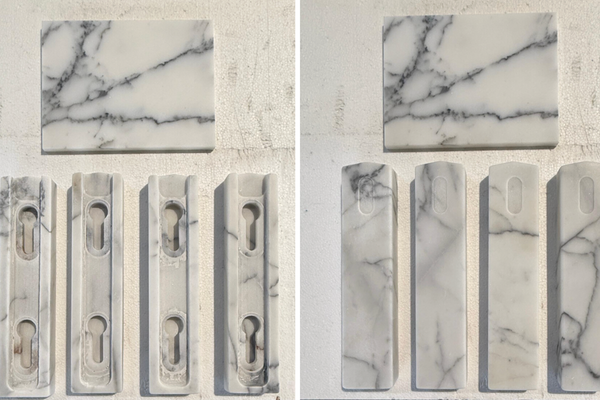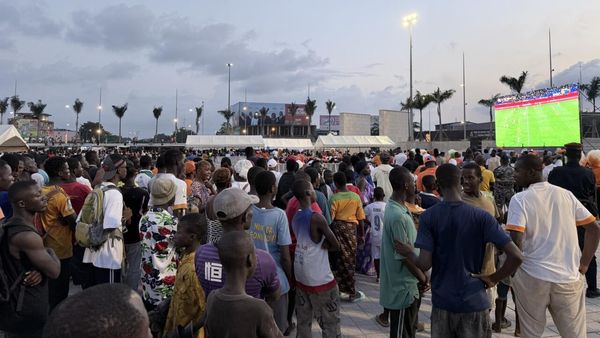
Remedios Ramos moved into her newly built, sand-colored Las Vegas home during a blistering week in July, when temperatures topped 117F. Inside her air-conditioned living room, a shiny grandfather clock, its price tag still attached, chimed every half hour. “I like it here,” Ramos said, glancing around at her pristine surroundings: brand new reclining chairs, a glossy dining set, a television still in its box.
“But,” she sighed, scrunching her face, “I like it better back home, in Hawaii.”
One year ago, the 83-year-old lost everything she owned, narrowly escaping fireballs and falling trees in the Maui wildfires that burned her home in the historical town of Lahaina. The blaze was the deadliest US wildfire in a century, killing 102 people and displacing at least 8,000.
Starting over this late in life in Nevada has not been easy. She arrived last year in Las Vegas, home to a growing community of transplants from Hawaii, where she joined her daughter and other family members. Since then, Ramos has tried to adjust to the new city and its stifling desert climate. Every day, she misses Lahaina. “I can see it hurts,” said her daughter, Arlyn Garcia.
More than 4,000 Maui residents and survivors have left the island since last year, with many pushed by the 8 August 2023 wildfires. Some, like Ramos, followed the steady stream of newcomers from Hawaii to Las Vegas. Known as the “ninth Hawaiian island”, Las Vegas has the second largest population of Native Hawaiian and other Pacific Islanders, second only to Honolulu, according to US census data.
Displacement due to the climate crisis is becoming an increasingly common reality. More than 3.2 million Americans have already fled their homes between 2020 and 2023 due to climate events, with more than 7.5 million more expected to relocate in the next 30 years due to wildfires, floods, drought and storms. And yet in many cases, they’re moving from one climate disaster to another: many of the places they’re relocating to – like Las Vegas – are facing their own climate threats.
As Ramos settled into her new home last month, Las Vegas experienced an unprecedented seven consecutive days of temperatures over 115F, the most extreme heat wave since the National Weather Service began keeping records there in 1937. Ramos tried to stay indoors, at least until evening. Even the wind, she said, blows hot. Ramos told her daughter she worried that if she went outside for too long, she might die.
***
All around Las Vegas, Maui fire survivors are starting over. There’s the Perez family, who lost everything in Lahaina and moved to Nevada to give their kids stability. In Las Vegas, their dad, Sergio, found work as a chef at The Venetian Resort. Or Kimanh Nguyen, who first moved to Hawaii at age 16, during the American war in Vietnam, raised three kids in Lahaina, and is now learning to garden in Nevada weather. Or Lorna Bermudez, a grandma whose Lahaina apartment was incinerated. She moved into a small Las Vegas apartment, which she furnished with donated folding chairs, and a frameless mattress on the carpeted floor.
Thirty minutes away from Ramos’s new home, former Maui residents Quirino Pulido Sr, and his wife, Esperanza Pulido, are now living with their son, Raymund Pulido. The couple was in Nevada visiting him when the fires erupted, destroying the home and all their belongings, including $35,000 in cash they had stashed in a safe. It was only thanks to a last minute decision to extend their stay in Las Vegas that they were not in Lahaina on the day of the blaze.
Like all survivors, the Maui wildfires sliced Ramos’s life into before and after. Before, Ramos lived in her Lahaina home surrounded by tangerine, banana, jackfruit and guava trees, along with her granddaughter, grandson-in-law, great-grandson and step-great-grandson.
Ramos had moved to Maui from the Philippines in 1967 at 25, after falling in love with her husband, who lived in Hawaii but was also from the Philippines, through his handwritten letters. Eventually, he asked her to marry him and move to Lahaina, where he bought their first house and where they raised three kids. Ramos bought a second Lahaina property, a two-story, five-bedroom home, in 2008, after her husband died.
She was deeply embedded in the community. She lived with her extended family and could walk to the senior center at the end of the road. And she regularly went to church, and hula, Filipino folk dance and Zumba classes with her best friend, another widow named Adela Corpuz.
All of it was destroyed in the inferno: all of her clothes, all of her belongings and both of her properties. Her beloved church, Zumba studio, dance centers and senior center. Many friends and neighbors died trying to escape. (Corpuz survived.) There was little left of the town in which she had spent the last six decades. Sifting through the ash, Ramos’s family only found her red rosary beads intact.
For three weeks, she and her family slept on different beds, futons, floors and in the garage of another relative who was also housing 19 others. Then they moved to the Honua Kai Resort and Spa in Kaanapali, three miles from Lahaina. Ramos felt lonely and bored. There were no classes or activities for elderly residents, and no educational programs for her great-grandson, whose school had burned down. Fire survivors strolled the grounds looking lost and defeated.
Ramos’s daughter, Arlyn Garcia, had moved to Las Vegas more than two decades ago, where she now lived with her husband, along with Ramos’s son and granddaughter. The family knew it could be treacherously hot in Las Vegas: it’s one of the fastest-warming cities in the country, with heat in the region made five times worse due to the climate crisis. Still, to Ramos’s family, Las Vegas seemed a better option for her than a flattened, blackened ghost town of Lahaina.
Ramos initially put off the idea, but after two months, she finally agreed.
She tearfully bid farewell to her Lahaina family, and to Corpuz. Toting a bag, she did not have much to pack. “As long as we are alive,” Corpuz reminded her, “we are strong.”
***
In Las Vegas, Garcia, 57, tried to keep her mother busy. She enrolled her in a Zumba class, which Ramos now attends twice a week. Ramos stays in contact with Corpuz and others through phone calls, FaceTime and Facebook Messenger. While out shopping with Garcia, she would say softly: “I used to have that, but it all burned.”
In Ramos’s new neighborhood, other houses on her block are still under construction, a sign that more families are coming. Ramos has her own bedroom and bathroom downstairs, while Garcia and other family members moved into rooms upstairs. Ramos felt some satisfaction buying new furniture, decorating the place. A framed art piece hangs above a statue of the Virgin Mary. It reads: “family”, above the words “grateful thankful blessed”.
In June, Garcia and Ramos traveled back to Lahaina to visit and follow up with her annual doctor appointments. Much of the debris has now been removed from the burn zone. Plots of land sit empty with piles of gravel. Ramos spent time with Corpuz and others, her friends greeting her with tight hugs. Ramos’s granddaughter had given birth to another great-grandchild.
But by July, they were back in Las Vegas, just as the heatwave arrived. One day, it reached 120F. Garcia tried to keep her mother’s spirits up, but she knew this weather was unparalleled. When 106F finally became the high again, it felt like relief.
That week in Las Vegas, the strip was emptier than usual, the relentless sun beating down on pavement that can scald feet. Cell phone batteries fry when left outdoors too long. Sweat drips from reddened bodies.
“Longer, worse and more frequent heatwaves are exactly what we expect to continue to occur in Nevada due to climate change,” said Joanne Leovy of the Nevada Clinicians for Climate Action. “There is every reason to believe that we will experience similar heat emergencies in the near future.”
Leovy pointed to one estimate that put the number of heat-related deaths in the US at 12,000 annually, a number expected to increase as the temperature rises. The county coroner’s office reported nine heat-related deaths so far this year in Clark county, home to Las Vegas, many of them elderly. “Extreme heat, day after day, impacts our mental health,” she said. “No one wants to be outside,” and this can impact anger or depression.
Yet across the nation, lured largely by lower housing costs, many also continue to migrate to wildfire-prone regions or places such as Las Vegas, which are prone to deadly heatwaves.
“It’s really impossible to disentangle climate change effects on mobility from the housing crisis,” said Elizabeth Fussell, a professor of population studies and environment and society at Brown University, noting that climate disasters can also deplete affordable housing from the market. “Increasing flood, wildfire, and hurricane events,” Fussell added, “are really just making this a much more acute situation.”
In Nevada, state leaders are planning how to bring more shade, trees and cooling centers, and to institute heat protections for workers. They are also considering creating more water resources, ideas to mitigate air pollution from wildfires, and how to tackle the rise of mosquitos that transmit diseases like dengue. But new climate risks are not at the top of the list of considerations for Americans considering relocating, even as people keep moving to places besieged by heat.
Last week Maui wildfire survivors reached a $4bn settlement, resolving more than 600 lawsuits filed by homeowners, residents and businesses. Still, for survivors like Ramos, waiting for the Lahaina she once knew to return in her lifetime feels unrealistic.
“Time is not on her side, right?” Garcia said.
Ramos has come to realize this too.
Maybe, Ramos said wistfully, she will see her Lahaina home rebuilt one day, so she can travel back and forth between Las Vegas and Maui.
On a recent afternoon, Ramos pulled up photos from her visit to Maui, showing Corpuz and other friends.
Outside in her quiet neighborhood, neatly paved walkways and a gleaming new playground sat empty in the 110F heat. Located in the shadow of the Red Rock Canyon mountains, the shade is no less hot. From the cool interior of her home, Ramos feels fortunate to be here, but she also grieves her old island life. In Las Vegas, “it’s okay,” she said. “It’s not the same.”







